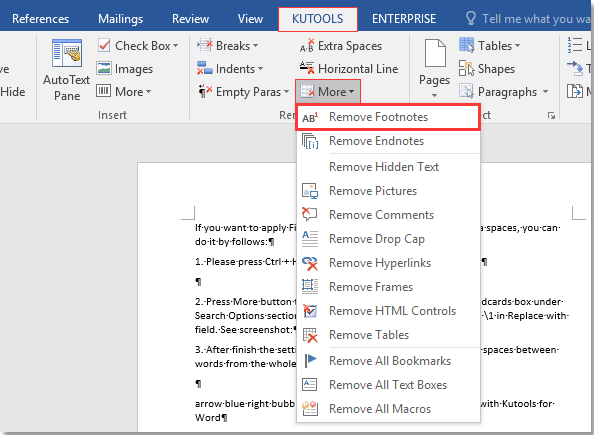

Step : Once you clicked on “Footnote Separator”, you will see the Footnote Separator line (as shown below) and also that annoying “paragraph” mark. Step : Go down to the “Footnotes” section, click on the “pull-down” arrow, click on “Footnote Separator” The “Footnotes” section will be shown below of the window. Step : Go to “References” tab then click on “Show Notes”. Step : Go to the “View” and then choose “Draft” The following instructions are for Microsoft Word 2007 for Windows. By the way, I think I am the only person who needs to work through three versions of Microsoft Office Word in a day’s work. Tomorrow I need to figure out the same solution for Word 2003.
#WORD FOR MAC 2011 CUTS OFF FOOTNOTE HOW TO#
So what the heck, sharing is caring, let me show you how to remove that stupid annoying mark.įYI: I solved this problem with my Microsoft Word 2011 for Mac first, then only tried on Word 2007 on my Dell.
#WORD FOR MAC 2011 CUTS OFF FOOTNOTE FULL#
You could sort of find some half-cup-empty solutions but not full solution. The fist word that came out of my mouth was: Jibai, because it was not something which you could delete, you couldn’t even click it on the “surface”. So this particular “paragraphing” mark came out of nowhere. This may at least give you a starting point for figuring out what is going on.So, in the process of working my 3rd shift this evening, I came across a screwed up problem in my word document.Ĭan you see that extra “paragraphing” mark just below that footnote separator line? If you are very used to working with Microsoft Office Word then you would know how to “show” that mark. At the very least you could try converting the footnotes to endnotes and seeing if they all show up in the endnotes. If the footnotes are that long, it might be more satisfactory to convert them to endnotes. I would think that Word would just take as much room as needed for footnotes, even if that left only a few lines of text on each page, but there may be some limitation. It's also possible, given that this is a thesis, that the length of the footnotes is such that they are overpowering the page. This problem can be solved by breaking the row up into several rows any row that long is bound to contain more than one paragraph, and it can be split so that there is one row for each paragraph. If the row ends so close to the bottom of the page that there is not room for all the footnotes, instead of being carried to the next page, the footnotes are just ignored. Word defers any footnotes in the row to the page where the row ends. You could also have problems if the text of your document is within a large table in which a single table row extends for several pages.
:max_bytes(150000):strip_icc()/002-inserting-footnotes-in-word-document-3540270-4e5eb456fa0e490d878441a2bf0d52cd.jpg)
Some users have reported large discrepancies between what is displayed in Print Layout view and what shows up in Print Preview. Take a look at your thesis in Print Preview and see if your footnotes all show up there. You should also not assume that what you see in Print Layout view is equivalent to what you will see when you actually print your document.

They may still be visible in some views of your document, but wouldn't be visible in Print Preview if you are looking at the "final" document with markup taken into account. It is possible, if it is turned on, that you've actually deleted some of your footnotes. You'll also want to check to make sure that Track Changes isn't turned on. Are some of your footnotes formatted as Hidden text? If they are and you have Word configured to not print Hidden text, the footnotes will not be visible in Print Preview. First, you should check the obvious formatting-related issues. Jackie wonders what is causing the problem.

She can view them in Normal view, but she needs to also view them in Page Layout view so she can ultimately print them out. It seems that some of the footnotes in the first chapter of her Ph.D. Jackie is having a problem with the footnotes in a document.


 0 kommentar(er)
0 kommentar(er)
